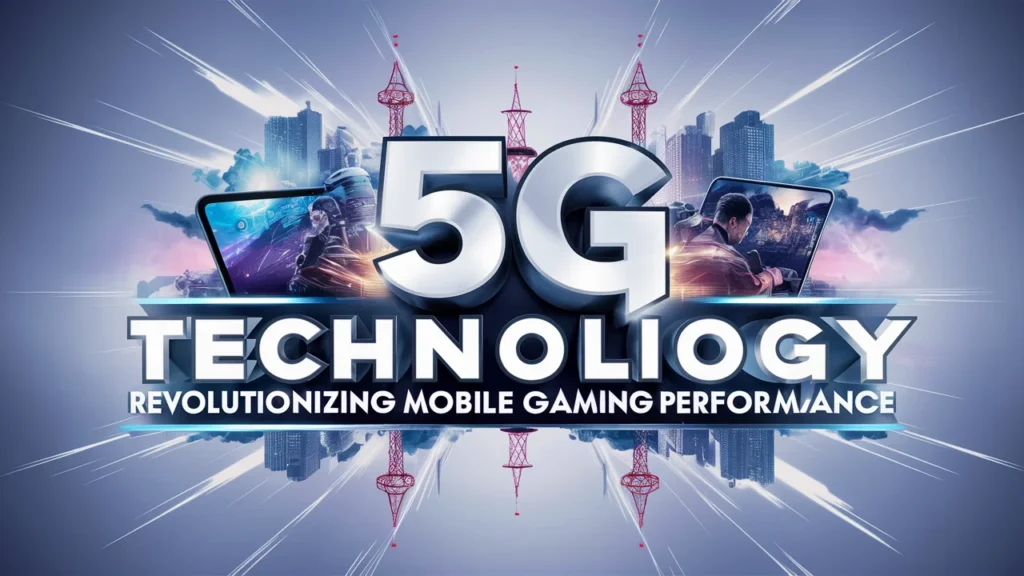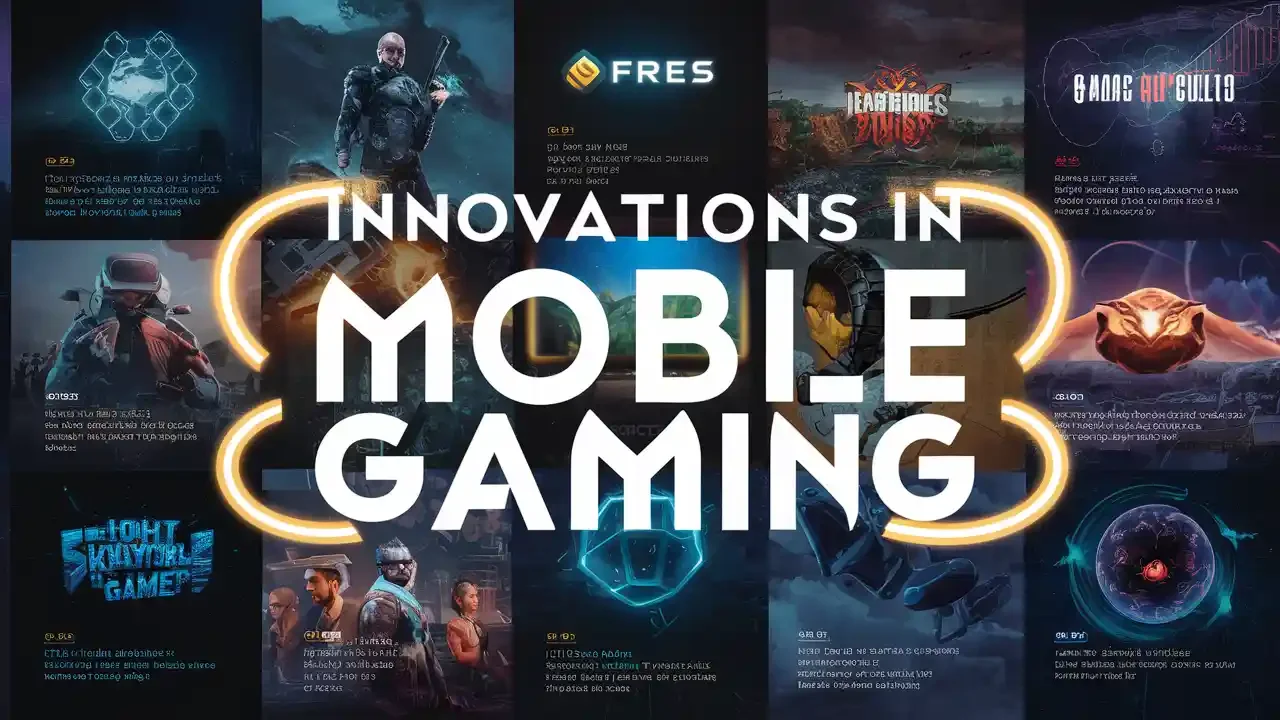Mobile gaming has evolved significantly from simple puzzle games to complex virtual worlds. Today, it is one of the fastest-growing industries in technology and entertainment. With constant technological breakthroughs, innovations in mobile gaming have transformed how we play, connect, and experience digital fun.
In this blog, we will examine the significant innovations in mobile gaming that are shaping new trends in the industry. From augmented reality to AI-driven gameplay, let’s dive into the future of gaming on mobile.
Augmented Reality (AR) Revolution in Mobile Gaming
Augmented Reality (AR) has become one of the biggest innovations in mobile gaming. Games like Pokémon GO demonstrated to the world the power of blending the real world with the digital one.
With AR, players can see virtual objects overlaid in their actual environment through their phone cameras. It makes gaming more immersive, interactive, and thrilling.
AR in gaming allows players to walk, explore, and interact with their surroundings. It turns the entire world into a playground.
Developers are now using ARKit from Apple and ARCore from Google to create mind-blowing experiences. AR will continue to evolve, offering even more realistic and engaging gameplay in the future.
5G Technology Boosting Mobile Gaming Performance

The rollout of 5G networks is another major shift in mobile gaming. 5G brings ultra-fast internet speeds and extremely low latency. This change has opened doors for smoother online multiplayer games, cloud gaming, and real-time gaming experiences.
With 5G, gamers can enjoy graphics-heavy games without delays or lag. It also enables faster downloading of large game files and supports innovations like live-streaming gameplay. As 5G becomes more widespread, mobile games will become even more sophisticated, bigger, and better.
Cloud Gaming on Mobile Devices
Cloud gaming is transforming the way mobile gamers access and play games. Instead of downloading large games, players can stream games directly from cloud servers. This innovation saves device storage and allows low-end phones to run high-end games.
Cloud gaming platforms, such as Xbox Cloud Gaming, NVIDIA GeForce Now, and Google Stadia, are making mobile gaming more accessible and convenient.
Players can now enjoy console-quality games on their smartphones. Plus, cross-platform gaming is easier with cloud services.
Artificial Intelligence (AI) Enhancing Mobile Games
Artificial Intelligence (AI) is another breakthrough fueling innovations in mobile gaming. AI enhances gaming experiences by creating smarter non-player characters (NPCS), adapting gameplay to user behaviour, and personalising game narratives.
AI is also used for cheat detection, game testing, and predictive analytics. It improves matchmaking systems and provides custom-tailored gaming experiences. As AI continues to evolve, mobile games will become increasingly intelligent and personalised.
Key Benefits of AI in Mobile Gaming:
- Smarter enemies and characters
- Personalised game levels and missions
- Better matchmaking for multiplayer modes
- Improved cheat detection and fair play
- Automated and faster game testing
Virtual Reality (VR) Integration in Mobile Gaming
Virtual Reality (VR) is no longer limited to PCS and consoles. Mobile VR headsets, such as Oculus Quest and Samsung Gear VR, have made VR gaming accessible to mobile users. Though still in its early stages, VR on mobile promises to bring full 3d worlds to your pocket.
VR games create deeper immersion by letting players step inside the game environment. As hardware and software continue to improve, mobile VR gaming will become increasingly popular and powerful.
Blockchain and NFTS Changing Game Economies
Blockchain technology and NFTS (non-fungible tokens) have introduced new ways to own, trade, and monetise in-game items. In blockchain games, players can truly own their assets and even sell them for real-world money.
Games like Axie Infinity and The Sandbox have shown how blockchain can create decentralised gaming economies. This innovation offers players real-world value for their in-game achievements, fostering a player-driven marketplace.
Hyper-Casual Games Dominating the Market
Hyper-casual games are simple, easy-to-play games that require a minimal learning curve. They are ideal for quick entertainment and have gained popularity in app stores over the past few years. Games like Crossy Road, Helix Jump, and Flappy Bird are examples.
These games are lightweight, addictive, and often free-to-play with ads. Their success proves that innovation isn’t always about complexity; simplicity can also be a winning formula.
Social Gaming and Multiplayer Features
Gaming is no longer a solo activity. Social features have become central to innovations in mobile gaming. Players now expect chat options, friend lists, guilds, and co-op modes.
Games like PUBG Mobile and Among Us have shown how multiplayer and social interaction drive game popularity. Social gaming enhances engagement, retention, and fosters a sense of community among players.
Popular Social Gaming Features:
- Live chat and voice communication
- Co-op missions and team battles
- Friend invites and in-game social media.
- Virtual events and tournaments
- Sharing achievements and replays
Advanced Graphics with Mobile GPUS
Mobile phone GPUS (Graphics Processing Units) are becoming extremely powerful. Innovations such as ray tracing and realistic shading are now available on mobile devices. Games like Call of Duty Mobile and Genshin Impact showcase console-quality visuals on smartphones.
As mobile hardware continues to advance, we can expect to see even more stunning, life-like graphics in mobile games. Better graphics also improve gameplay by making it more realistic and engaging.
Personalised Experiences through Machine Learning
Machine learning is taking player personalisation to the next level. Games analyse user behaviour to adjust difficulty levels, suggest items, or create custom events. This innovation makes every player’s journey unique.
Instead of one-size-fits-all games, machine learning allows games to adapt in real-time, keeping players hooked and satisfied.
Future Trends in Mobile Gaming
As technology continues to grow, so will innovations in mobile gaming. In the future, we can expect:
- Full cloud-based mobile gaming
- Mixed reality games blending AR and VR
- Blockchain-powered universal game currencies
- AI-generated dynamic storylines
- Haptic feedback advancements for touch sensations
The mobile gaming industry is poised to reach new heights, driven by improved connectivity, advanced devices, and increasingly immersive experiences.
Final Thoughts
The journey of innovations in mobile gaming has been nothing short of extraordinary. From AR adventures to blockchain economies, mobile games have evolved into powerful, social, and personalised platforms.
Developers and technology leaders are continually pushing the limits, making mobile gaming more exciting than ever.
If you are a gamer, developer, or simply a tech enthusiast, keeping an eye on these trends will open up numerous opportunities in the years to come. Mobile gaming is no longer the future; it’s the present — and it’s changing fast.
FAQS About Innovations in Mobile Gaming
Q1. What are the latest innovations in mobile gaming?
The latest innovations in mobile gaming include augmented reality (AR), 5G technology, cloud gaming, artificial intelligence (AI), blockchain integration, and hyper-casual game development. These technologies are making mobile games more immersive, faster, and smarter.
Q2. How is 5G technology improving mobile gaming?
5G technology enhances mobile gaming by providing ultra-fast internet speeds, reduced latency, and improved connectivity. It enables smoother multiplayer gaming, faster downloads, and real-time gameplay experiences with minimal lag.
Q3. What role does augmented reality play in mobile gaming?
Augmented reality (AR) combines digital elements with the real world, making mobile games more engaging and immersive. It turns everyday surroundings into gaming arenas, offering players a new level of engagement.
Q4. How does cloud gaming affect mobile users?
Cloud gaming enables mobile users to stream games without requiring large file downloads. It conserves device storage and allows low-end phones to run high-end games, providing console-quality experiences on mobile.
Q5. Are blockchain and NFTS changing mobile games?
Yes, blockchain and NFTS are giving players true ownership of in-game assets. Players can trade, sell, and use digital items outside the game, creating real-world value from virtual achievements.




